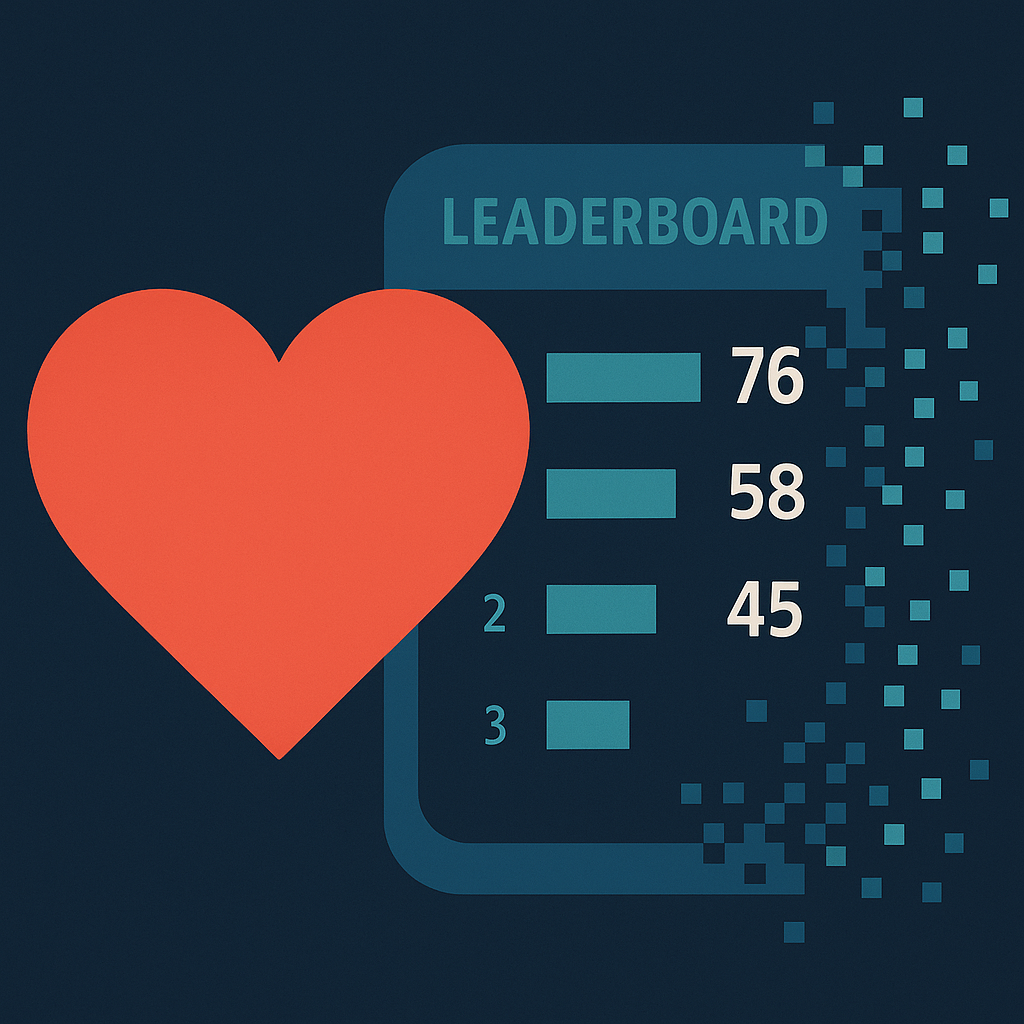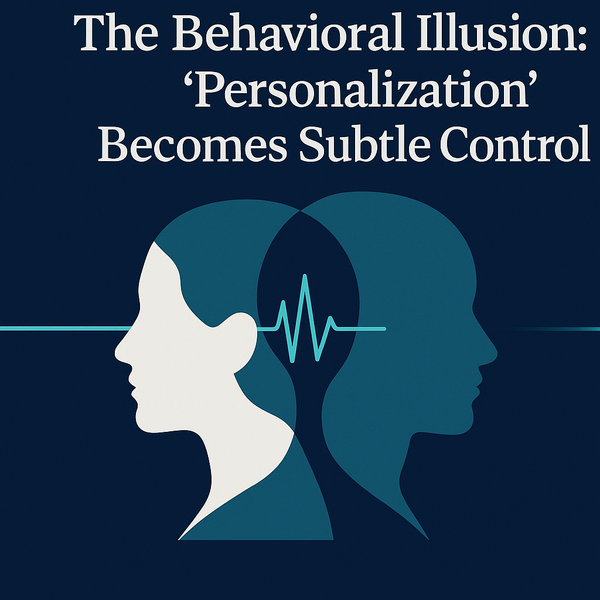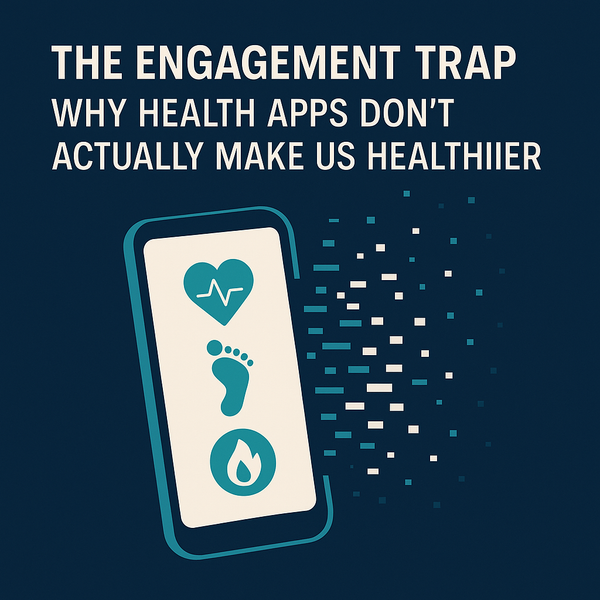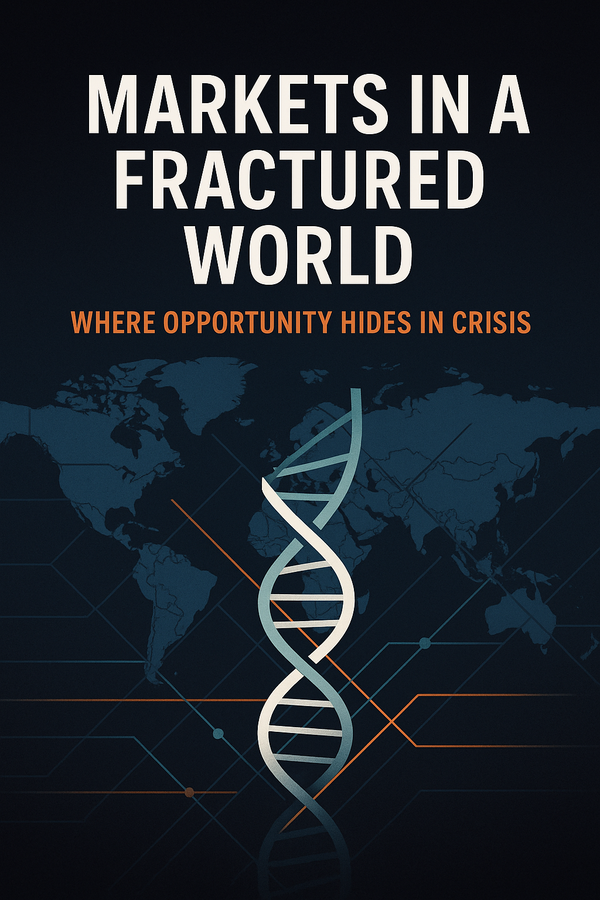Gamifying Health: When Motivation Turns Into Manipulation

Key Takeaways
- Gamification can drive motivation — or dependency.
- The same psychological levers that build healthy habits can also exploit them.
- AI-powered gamification amplifies both potential and risk.
- Ethical design requires transparency, purpose, and limits.
The Game We Didn’t Know We Were Playing
Step counts. Streaks. Badges. Leaderboards.
Health apps promised to make wellness fun, to turn discipline into dopamine. Yet, behind the fun, something subtler is happening we are being trained.
Every ring closed (daily rings!), every badge unlocked, every sound of victory tickles the same neural circuits that keep people glued to slot machines and mobile games. It feels like progress, but it’s often just participation.
Gamification works. The question is: for whom?
What started as a motivational tool has quietly become a behavioral control system, one that rewards engagement long after it stops rewarding health.
The Science Behind the Game
Gamification isn’t random design; it’s behavioral science with a commercial twist. Duolingo streaks come to mind?
The Operant Loop
B.F. Skinner’s 1950s research on operant conditioning revealed that variable rewards (rewards given unpredictably) produce the strongest, most persistent habits. Every app notification or “surprise badge” exploits this principle. It’s not evil; it’s efficient. But efficiency without ethics becomes exploitation.
The Motivation Matrix
According to Self-Determination Theory, sustainable motivation arises from three conditions:
- Autonomy: the freedom to choose.
- Competence: the sense of progress.
- Relatedness: feeling connected to others.
Gamification often violates the first condition because you are not free to compete or not. When rewards replace reflection, motivation shifts from intrinsic (“I want to”) to extrinsic (“I must or I loose”).
A 2024 review in Frontiers in Digital Health found that while gamified interventions improved short-term engagement, intrinsic motivation dropped once rewards were removed, a clear symptom of what psychologists call crowding-out effect.
The BJ Fogg Influence
At Stanford, behavioral scientist B.J. Fogg developed the model Behaviour = Motivation × Ability × Prompt. It underpins most habit-forming design, from Fitbit to Duolingo.
Where this framework has been applied in consumer health design, we learned that its power lies in timing and simplicity. But the same mechanism that builds good habits can also bypass conscious decision-making. When commercial goals drive those prompts, the line between encouragement and conditioning blurs.
We think we’re playing the game. In reality, the game is playing us.
The Ethical Line
Gamification is neither good nor bad, it’s just directional. Everything depends on the intent of what you gamify.
- When a meditation app withholds achievements to boost streaks, is that care or coercion?
- When a fitness app pushes comparison, does it build community or anxiety?
- When a corporate wellness platform rewards daily check-ins, is it promoting health or surveillance?
Manipulation begins where transparency ends. Still in the light of the need of proving outcomes.
Companies often claim they’re “nudging” users toward healthier behavior. Yet nudges can become shoves when the algorithm optimizes for engagement, not wellbeing (as we discussed in my Engagement Trap article). When success equals minutes in app, health becomes secondary to monetization.
The difference between a nudge and a shove is invisible — until you look at who profits.
AI and the Next Level of Behavioral Design
Artificial intelligence has supercharged gamification.
Where old systems relied on generic rewards, AI-driven platforms can now tailor challenges to each user’s psychology: what time of day you respond best, what kind of feedback keeps you engaged, even what emotion your smartwatch detects.
Used ethically, this precision can create adaptive motivation systems that understand when to encourage and when to rest. It could help chronic patients adhere to medication, post-surgery patients rebuild stamina, or employees sustain wellness programs without burnout.
Used recklessly, it becomes behavioral engineering at scale pushing users toward predictable patterns of attention and spending.
A 2023 Lancet Digital Health commentary warned that without transparency, “adaptive gamification risks replacing autonomy with algorithmic dependency.”
The more precisely systems can influence us, the more urgent the question of consent.
Reclaiming Motivation Without Losing Meaning
The goal is not to strip gamification from health, it’s to redeem it.
We can keep what works and fix what doesn’t by being mindful of the negative outcomes.
Three principles define ethical gamification:
- Transparency: Tell users why a challenge exists, what it measures, and who benefits.
- Purpose: Rewards should reinforce intrinsic motivation (health improvement), not substitute for it.
- Exit: Users must be able to opt out of gamified features without losing access to the product’s value. And this should be visible in our apps.
When Guidance Matters
Not all users are equal. In rehabilitation after acute events or chronic care, external structure isn’t manipulation, it’s protection. That external structure is needed.
A patient recovering from heart surgery, for example, needs guided progression, a carefully calibrated plan co-designed by clinicians and supported by algorithms.
True empowerment isn’t absolute autonomy; it’s context-aware autonomy freedom within informed boundaries.
The Future of Healthy Games
AI could help gamification grow up.
Instead of maximizing engagement, intelligent systems could measure meaningful adherence, outcomes like blood pressure improvement, stress reduction, or consistent sleep.
Rather than competing for time, health platforms could compete for trust. And this can happen already know, it just a matter of time.
Imagine a system that shows your streak but also explains why breaking it might be healthy today. That’s the difference between addiction and awareness. Similar for language apps like Duolingo that do not help you understand what you have gained, again they are focused on engagement and not on outcome.
The healthiest game is the one where you can walk away and still win.
Why It Matters
Gamification is the quiet infrastructure of modern health, in my opinion is here to stay as it is invisible, persuasive, powerful.
When aligned with ethics, evidence and outcomes it transforms care. When left unchecked, it turns health into habit loops and users into metrics.
The challenge is not to ban behavioral design, but to govern it. The challenge is to build a digital health ecosystem where motivation serves meaning, not manipulation.





